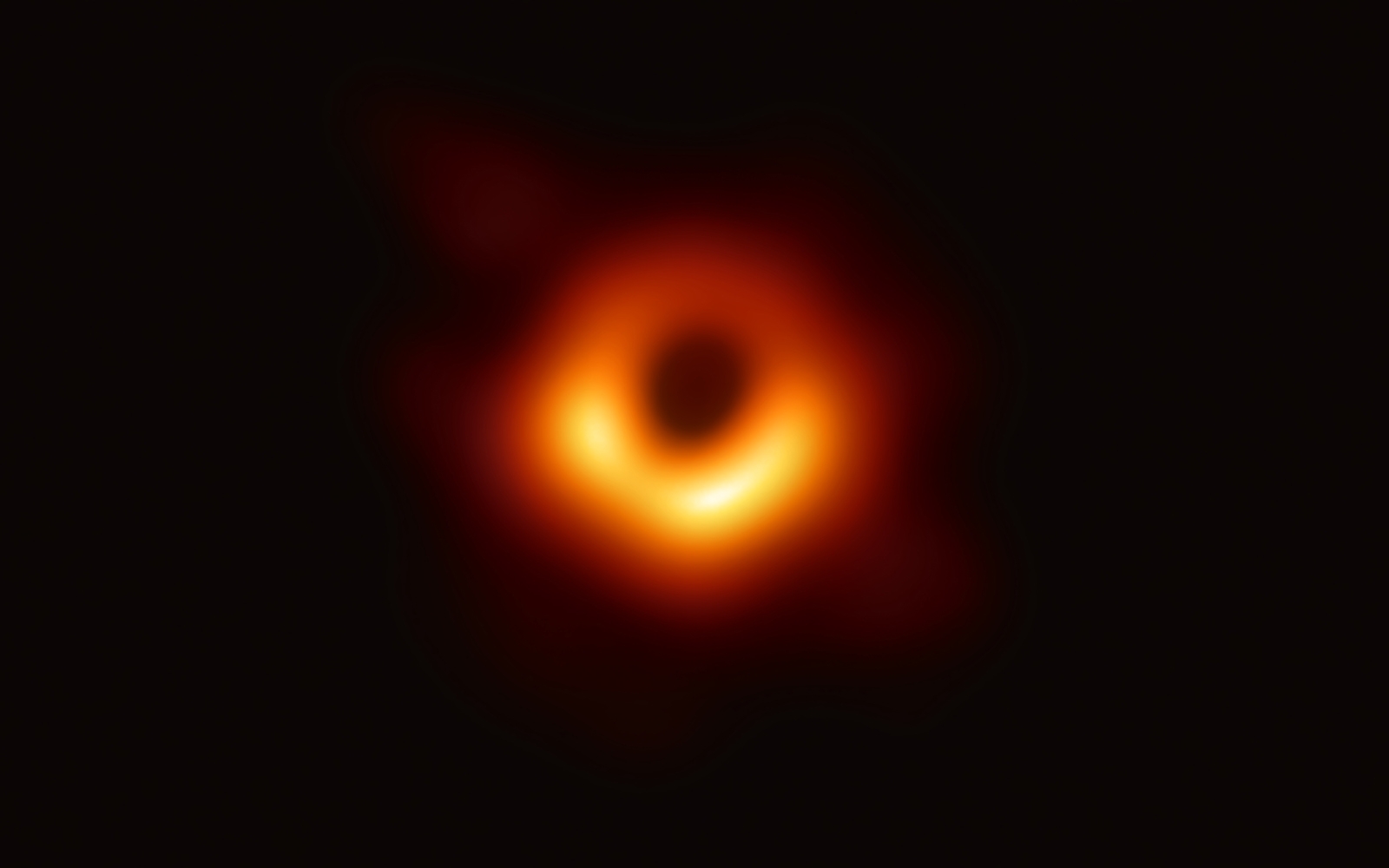Scientists Reveal the First Image of a Black Hole

Black holes are some of the universe’s strangest and most disquieting phenomena, a region of space where gravity is so strong that the laws of physics break down and nothing, not even light, can escape.
They’ve confounded scientists and fueled the imagination for decades. But for all of their dreadful power, black holes have never actually been seen. Instead, we’ve had to settle for secondary or indirect evidence of their existence, like observing the effects of their intense gravity on neighboring cosmic bodies.
Until now, that is. Earlier today, scientists released the very first image of a supermassive black hole that’s located in the center of the Messier 87 galaxy.
“If immersed in a bright region, like a disc of glowing gas, we expect a black hole to create a dark region similar to a shadow — something predicted by Einstein’s general relativity that we’ve never seen before,” explained chair of the EHT Science Council Heino Falcke of Radboud University, the Netherlands. “This shadow, caused by the gravitational bending and capture of light by the event horizon, reveals a lot about the nature of these fascinating objects and has allowed us to measure the enormous mass of M87’s black hole.“
Multiple calibration and imaging methods have revealed a ring-like structure with a dark central region — the black hole’s shadow — that persisted over multiple independent EHT observations.
The image is the result of the years-long “Event Horizon Telescope” project, which linked eight radio telescopes around the world to essentially form a single, super-powerful planet-sized radio telescope, thus giving scientists an unprecedented ability to study super-distant objects. (Messier 87 is located 53 million light-years, or approximately 312 quintillion miles, away from Earth. And just in case that number isn’t mind-blowing enough, when they describe the black hole as “supermassive,” they mean it’s 6.5 billion times more massive than our sun and almost as big as our solar system.)
Putting aside the sheer awe of seeing a black hole for the first time, the technical and logistical aspects of this discovery are also pretty amazing. For example:
- The telescopes involved had to be upgraded with ultra-precise atomic clocks so they’d properly synchronize with each other.
- A five-night period of observation resulted in 5 billion megabytes of data, and scientists spent two years parsing all of the data.
- The people tasked with creating the final image were divided into 4 teams that worked independently of each other, in order to ensure quality control.
- And perhaps most impressive of all, hundreds of people saw the image before its official release, and yet it was never leaked.
Back in 2015, The New York Times posted a lengthy piece titled “Black Hole Hunters” that followed the trials and efforts of the EHT team, and hinted at the sheer scope and ambition of the project.
In all, the Event Horizon Telescope involves 20 universities, observatories, research institutions and government agencies, and more than a hundred scientists. Among other things, to keep the radio telescopes in their network suitably synchronized, they had to equip them with new atomic clocks accurate to within one second every 100 million years, and new short-wavelength receivers.
Dr. Doeleman recalled having to wear an oxygen tank to test atomic clocks at the new ALMA array, on a 16,000-foot plateau in Chile. Another colleague, Daniel Marrone of the University of Arizona, spent last winter at the South Pole installing a new receiver. Both of these installations will eventually join the Event Horizon observations.
The March observing run was the first time the group would have enough telescopes — seven radio telescopes, on six mountains — to begin to hope they could glimpse the black hole. They would have five chances over a period of two weeks.
[…]
If everything went right — if all the elements of Dr. Doeleman’s spider web of weather and electronics and superprecise timing held together — they would see that any given wavefront would arrive bearing the marks of interference, a complicated pattern of crests and troughs — “fringes,” in the astronomical vernacular. With enough fringes from baselines going in different directions across the sky from the various observatories, the astronomers could reconstruct a map what was happening out there, thousands of millions of light-years away.
Seeing even one fringe from one baseline would be a triumph — it would mean they were achieving the kind of resolution needed to make a detailed image of Sagittarius A* and see if it looks like a black hole. Making that image, of course, would be another long story indeed. Until they saw that first fringe, the Event Horizon team would simply have to hold their breaths.
That could be months. All that data would be too much to send over the Internet. Nobody would know if the whole telescope had worked until the data recorded from each separate instrument had been correlated in a supercomputer back at M.I.T. As Dr. Doeleman liked to say, “The bandwidth of a 747 loaded with disk drives is phenomenal.”
If they are lucky, sometime later this summer or fall, then, they might see emerging from the computers at M.I.T. the first rough image of a black hole. And its size and shape could provide a judgment on general relativity, the harshest test yet a century after Einstein dreamed up the theory.
It’s hard not to admire scientists who are willing to devote years of their life and brave brutal conditions in the pursuit of knowledge. Indeed, it’s really quite inspiring even as it’s humbling to consider what their discoveries reveal to us about the utterly mind-boggling scale and power of our universe.